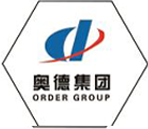
Nov . 21, 2024 14:31
Back to list
coalescing filter
Understanding Coalescing Filters The Key to Efficient Fluid Management
In the realm of fluid management and filtration technologies, coalescing filters play a crucial role. These specialized filters are designed to separate two immiscible liquids, typically water and petroleum-based products, like oils and fuels. Their effectiveness in various industrial applications, including refining, chemical processing, and automotive maintenance, makes them indispensable.
The Principle Behind Coalescing Filters
Coalescing filters operate on a simple yet effective principle. They utilize the natural tendency of droplets to merge or coalesce into larger droplets. When a mixture of fluids flows through a coalescing filter, the filter medium captures smaller droplets of the dispersed liquid (like water) and encourages them to combine with each other. This process significantly increases the size of the droplets, making it easier for them to separate from the primary fluid stream.
The filter typically comprises a series of materials with varying densities and surface properties, which facilitate the coalescing process. These materials can include fiberglass, synthetic fibers, or even metallic mesh, each chosen for their ability to enhance droplet formation and separation. As the fluid passes through the filter, the coalesced droplets become large enough to gravitate out of the solution, settling at the bottom of the storage tank or filter housing.
Applications and Benefits
Coalescing filters are widely employed in various industries due to their unique capabilities. In the oil and gas sector, they are used to remove water and particulates from crude oil. This not only enhances the quality of the product but also prevents equipment corrosion, which can be exacerbated by the presence of water. Similarly, in the automotive field, coalescing filters are crucial in ensuring clean fuel and preventing water from entering combustion engines, which can lead to performance issues or catastrophic engine failure.
coalescing filter

One of the significant benefits of using coalescing filters is their efficiency
. These filters typically achieve high levels of separation, often removing 99% or more of water and particulate matter from the fuel or oil stream. This level of effectiveness not only prolongs the life of equipment but also reduces maintenance costs and downtime, resulting in significant savings for businesses.Moreover, coalescing filters offer a sustainable solution to fluid management. By effectively separating water from hydrocarbons and other contaminants, they help in recycling and reusing resources, thereby minimizing waste and environmental impact. The ability to recover usable fluids is a valued characteristic in industries that prioritize sustainability.
Challenges and Considerations
While coalescing filters present many advantages, they are not without challenges. One of the significant issues is their maintenance. Over time, filters can become clogged with particulates, which can hinder their performance. Regular monitoring and maintenance are crucial to ensure efficient operation. Operators must also consider the type of coalescing media and its compatibility with the application, as different fluids may require specific filter materials to achieve optimal results.
Another challenge lies in the initial cost of installation. High-quality coalescing filters can represent a substantial upfront investment, particularly for smaller operations. However, the long-term savings associated with reduced equipment damage and lower maintenance costs can justify this expense.
Conclusion
In summary, coalescing filters are a vital component in fluid management systems across various industries. Their unique ability to efficiently separate immiscible liquids offers numerous benefits, including enhanced product quality, reduced maintenance costs, and support for environmental sustainability. While there are challenges associated with their use, such as maintenance and initial costs, the overall advantages greatly outweigh these concerns. As industries continue to evolve and place greater emphasis on efficiency and sustainability, the role of coalescing filters will undoubtedly expand, reinforcing their position as essential tools for effective fluid management.
Next:
Latest news
-
Safety Valve Spring-Loaded Design Overpressure ProtectionNewsJul.25,2025
-
Precision Voltage Regulator AC5 Accuracy Grade PerformanceNewsJul.25,2025
-
Natural Gas Pressure Regulating Skid Industrial Pipeline ApplicationsNewsJul.25,2025
-
Natural Gas Filter Stainless Steel Mesh Element DesignNewsJul.25,2025
-
Gas Pressure Regulator Valve Direct-Acting Spring-Loaded DesignNewsJul.25,2025
-
Decompression Equipment Multi-Stage Heat Exchange System DesignNewsJul.25,2025

